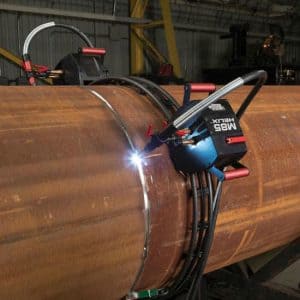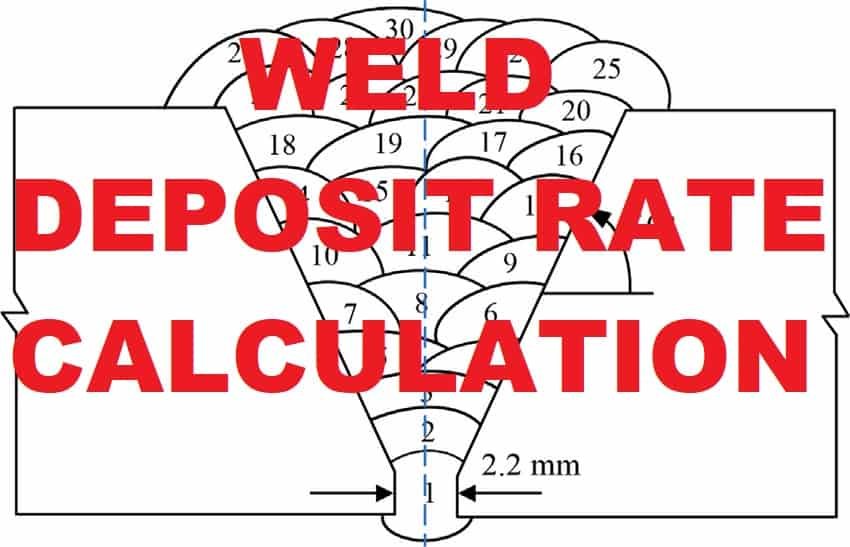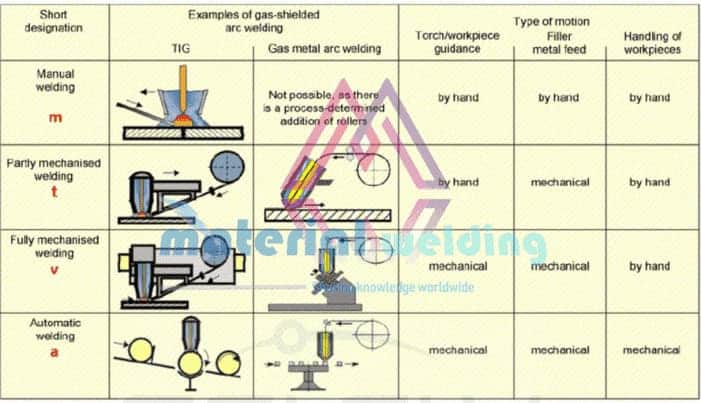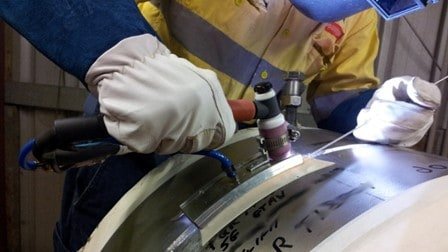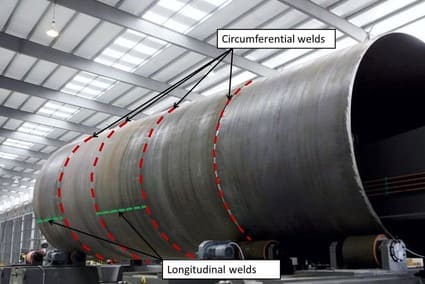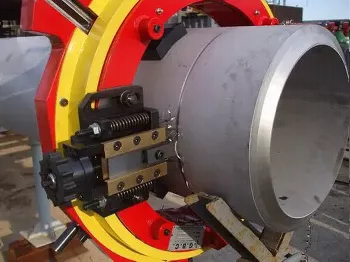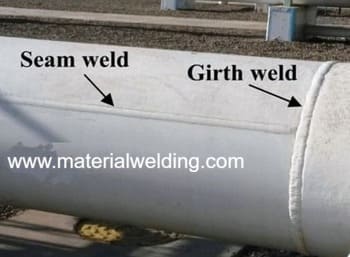What is Orbital Welding
Orbital welding (also called Orbital TIG Welding) is a fusion welding technique that uses a specially designed rotating circular tool (360° rotation or 180° bi-directional rotation) to perform circumferential seam welds on static pipes.
Orbital welding Machine is attached to TIG welding (GTAW) torch that converts manual TIG welding to Automated TIG. As the welding takes place in orbital direction, the process is called Orbital Welding.
Orbital Welding Machine can also be attached with MIG Welding (GMAW) and is mainly used for welding of oil & gas pipelines.
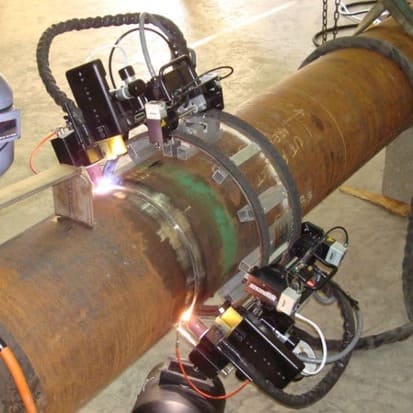
Advantages & Disadvantages of Orbital Welding
Orbital Welding is a relatively fast and efficient way to weld large pieces of metal. Orbital welding has many advantages over other types of welding processes, including:
- Greater accuracy: Because the tool is rotating, it is more accurate than other welding processes, which means less wastage of material and a better quality weld.
- Faster: The high speed of the tool means that welds can be made quickly and easily.
- Easier to use: Orbital welding is simpler to use than other welding processes, meaning that it can be used by people with less experience.
- More consistent results: Because of its accuracy and speed, orbital welding produces more consistent results than other methods.
- Portable: The setup can be easily placed from one place to other.
- Higher safety: The setup can be used in hazardous places where human can be at high risk.
However, there are also a few disadvantages to orbital welding:
- Orbital welding requires special equipment and training.
- Orbital welding can be more expensive than other types of welding.
- It can only be used for circumferential welds.
- For different diameters variations, different welding head are required.
Where Orbital Welding is used?
Orbital welding is a technique that uses a rotating welding tool (torch arrangement) to create a weld.
The rotating tool moves around the circumference of the material to be welded, creating a consistent weld.
The Welding can be carried out with a filler wire or autogenous welding (Without fillet wire).
Orbital welding is often used in high-production environments because it creates a consistent weld with little operator input.
It creates very uniform high quality welds that is otherwise not possible to weld with manual TIG operation.
The two most important uses of Orbital TIG Welding are:
- Welding to Pipe to Pipe Circumferential Joints.
- Welding of Tube to Tubesheet joints.
- Welding of pipe/ Tube welds in hazardous conditions such as welds in a active nuclear reactor.
Orbital welders
Orbital welders are a type of welder that uses a welding torch arrangement to create a circular weld around the circumference of a pipe or other cylindrical object.
They are considered to be less labor-intensive and more precise than traditional welders.
The most common use for orbital welders is in the manufacturing of pipes and tubes, where they are used to join two pieces of metal together.
Orbital Welds
Orbital welds are quickly becoming the preferred weld for quality, fast, and reliable welds.
The weld is made by using a rotating welding head (Using Orbital Welding Machine) that moves around the circumference of the joint to be welded.
This allows for a much faster and more consistent weld than traditional methods.
Orbital Welding Machine
Orbital welding machines are used to weld pipe and tubing together. They are available in both manual and automatic models.
The manual model is operated by a welder, while the automatic model is operated by a computer.
Orbital welding machines are available in three different price ranges:
- Low,
- Medium, and
- High.
The low-price range includes the manual model, while the medium-price range includes the automatic model with limited features. The high-price range includes the automatic model with advanced features.
The price of an orbital welding machine varies depending on the size and type of machine. Smaller machines typically cost less than larger machines. Manual machines cost less than automated machines.
The features that are included in an orbital welding machine vary depending on the price range. In the low-price range, machines include basic features such as an adjustable work table and an emergency stop button.
In the medium-price range, machines include additional features such as digital displays and programmable weld sequences.
Orbital Welding Salary
Orbital welding is a process that uses a welder to make a weld on a part that is in orbit. It is often used in the aerospace and defense industries. The salary for an orbital welder can vary depending on the country you are working in.
In the United States, the average salary for an orbital welder is $72,000 per year. In Canada, the average salary is $64,000 per year.
Orbital Welding Training
Orbital welding is a welding process that uses a robotic welder to make a weld. The weld is made by the robot moving around the workpiece in a circular or orbital path. Orbital welding is used to weld thin sheets of metal together.
There are several orbital welding training schools in the USA. The schools offer courses in orbital welding theory and practice. They also offer courses in safety and how to use the equipment.
Orbital welding is a safe and efficient way to weld thin sheets of metal together. It is used in many industries, including automotive, aerospace, and medical device manufacturing.
Orbital Welding Equipment
Orbital welding machines are different from other types of welding machines in several ways.
First, they use an orbital welding head to weld the parts together. This head moves in a circular pattern, which helps to produce a strong weld.
Second, orbital welding machines are typically smaller and more portable than other types of welding machines. This makes them ideal for use in small shops or on the go.
Orbital welding equipment consists of three main parts:
- Welding machine,
- Orbital Welding Torch head, and
- Wire feeder.
- Cooling system
The torch head is what creates the circular motion around the weld joint. The torch is connected to the wire feeder & welding machine.
The wire feeder feeds the wire to the torch, which is used to supply the filler material for the weld if needed.
Orbital Welding Pipe
Orbital welding is often used to weld pipe. Pipe welding is a critical process in many industries, such as oil and gas, water treatment, and chemical processing.
It is important that the welds are strong and reliable, so that the pipe can withstand the high pressures and temperatures associated with these industries.
Orbital welding is perfect for welding pipe because it produces a consistent, quality weld every time.
Orbital Welding Procedures
Orbital welding is a welding process that uses an orbital welder to create a weld using TIG Welding (Gas Tungsten Arc Welding- GTAW). This process is often used to weld together thin pieces of metal.
The steps for orbital welding are as follows:
- Prepare the workpiece by cleaning it & align the pipes.
- Set up the welder and adjust the settings according to the type of weld you are creating.
- Place the workpiece in position and tack it in place.
- Begin welding along the seam, moving the welder head in a circular motion.
- Ensure the pipes are kept in stationary position during welding.
- Finish welding the seam and release the pressure on the workpiece.
Welders use many techniques to join metal parts, but one of the most popular is orbital welding. This process uses a special welder that moves in a circular pattern around the weld seam. The motion of the welder creates a heat pattern that melts the metal and forms a strong bond.
There are several steps involved in orbital welding:
1. Preparing the Parts: The first step is to clean and prepare the parts to be welded. The surfaces must be free of contaminants, oils, and other debris. They must also be at the correct temperature so that the weld will adhere properly.
2. Positioning the Parts: Once the parts are ready, they are placed into position and clamped together.
3. Applying the Weld: A wire or rod is then melted and used to fuse the metals together.
Orbital Welding Parameters
Orbital Welding Process is a automated welding method for welding circumferential welds.
The orbital welding parameters are the:
- Speed of the weld head.
- Weaving pattern.
- Welding Current & Voltage.
- Welding Time.
- Arc Length.
- Wire feed rate (WFS).
These parameters can be adjusted to create different types of welds. The speed of the weld head affects the width of the weld bead.
The size of the weld bead affects the strength and quality of the weld. The amount of heat applied to the weld affects its strength and toughness.
Orbital Welding Training Near Me
Orbital welding is a process that uses a rotating welder head to apply heat and weld material together.
This type of welding is often used in heavy fabrication and manufacturing because it produces a high-quality, consistent weld.
If you’re looking for orbital welding training near you, there are a few things to consider.
The first step is finding an orbital welding school that offers the training you need. There are many schools across the country that offer this type of training, so do your research to find the best program for you.
Make sure the school has a good reputation and offers hands-on training with industry-standard equipment.
Once you’ve completed your training, it’s important to get experience in the field. Try to find an internship or apprenticeship with a company that does orbital welding.
Orbital Welding Machine Manufacturers
The top orbital welding machine manufacturers are considered to be the best in the business.
The quality of their machines is impeccable, and they continue to innovate and improve their products.
Some of the most respected names in the industry include Fronius, Miller, Lincoln Electric, and ESAB.
These companies have been around for many years and are known for their high-quality products.
Tube to Tubesheet Orbital Welding
Tube to tubesheet orbital welding is a process that welds the circumference of a tube to the face of a tubesheet.
This type of welding is used in many industries, including power generation, oil and gas production, and petrochemical processing.
The tube to tubesheet orbital welding process begins by preparing the surfaces to be welded.
The tube is then clamped in place, and the welder uses an orbital welding head to create the weld. This type of welding is very reliable and produces high-quality welds.
Tube to tubesheet orbital welding is a process that uses an orbital welder to weld a tube to a tubesheet. The process is often used in the manufacture ofheat exchangers, heat exchangers plugging welding, and other types of equipment that use tubes and tubesheets.
The orbital welding process provides a strong, leak-free weld that is less likely to corrode than a weld made with traditional methods.
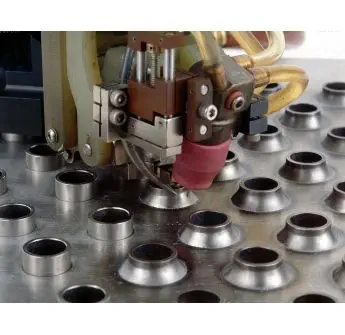
Orbital Welding Swagelok
Orbital welding is a process that uses a rotating welding tool to apply heat and weld metal pieces together.
Orbital welding is often used for large, heavy-duty projects because it provides a more consistent weld than other methods.
Swagelok is a company that specializes in orbital welding tools and supplies. They offer a variety of products, including welding guns, torches, tips, and accessories.
Similar Posts:
